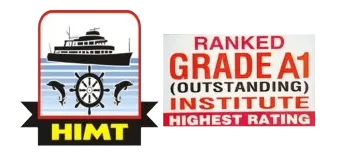How to Join the Merchant Navy After 12th?
Table of contents:
What is Merchant Navy?.
Departments in the Merchant Navy
Deck Department
Engine Department
Step-by-Step Guide to Join the Merchant Navy After 12th
Step 1: Complete 12th with PCM
Step 2: Choose a Course Based on Your Interest
Step 3: Meet Age and Medical Requirements
Step 4: Appear for IMU CET Entrance Exam
Step 5: Enroll in a DG Shipping Approved Maritime Training Institute (MTI)
Top marine colleges in India
Career Growth
Conclusion
What is Merchant Navy?
The Merchant Navy is a fleet of commercial ships involved in transporting cargo and passengers across the globe. It plays a vital role in international trade and requires trained professionals to operate and maintain these vessels.
Unlike the Indian Navy, which is a part of the armed forces, the Merchant Navy is a civilian sector. It includes roles such as navigating officers, marine engineers, and electro-technical officers.
Departments in the Merchant Navy
There are 2 main departments on the ship. After the 12th, students can choose to join one of the departments:
1. Deck Department
- Responsible for navigation, cargo operations, and overall safety of the ship.
- Officers in this department steer the ship and manage operations on deck.
2. Engine Department
- Handles the technical functioning and maintenance of ship machinery.
Marine engineers work in the engine room, ensuring the smooth functioning of engines, generators, and other machinery.
Step-by-Step process:
Step 1: Complete 12th with Science (PCM)
Students must have completed the 12th standard with:
Physics, Chemistry, and Mathematics (PCM)
Minimum 60% marks in PCM
At least 50% in English.
Step 2: Choose a Course Based on Your Interest
For Deck Department:
Diploma in Nautical Science (DNS) – 1 Year
Leads to a B.Sc. Nautical Science degree (after onboard training and exams).
Shorter course duration, quick entry into sea service.
Onboard training is compulsory after the course.
B.Sc. Nautical Science – 3 Years
More detailed academic training before going on board.
Suitable for those who prefer a stronger academic base.
Also leads to a career as a Deck Officer.
For the Engine Department:
B.Tech Marine Engineering – 4 Years
Full-fledged engineering degree in marine systems.
Prepares you to become a Marine Engineer onboard.
Involves both classroom and practical workshop training.
Step 3: Meet Age and Medical Requirements
Age should generally be between 17 and 25 years. (Varies based on the course)
Must be medically fit as per DG Shipping norms.
Eyesight must be 6/6 (unaided) with no color blindness.
Step 4: Appear for Entrance Exams
IMU-CET (Indian Maritime University – Common Entrance Test):
Required for most undergraduate courses, including DNS, B.Sc Nautical Science, and B.Tech Marine Engineering.
Step 5: Enroll in a DG Shipping Approved Maritime College
Ensure that the institute you choose is:
- Approved by the Directorate General of Shipping, Government of India.
- Affiliated with the Indian Maritime University, a central university under the Ministry of Ports, Shipping and Waterways, Government of India
- Provides pre-sea training, onboard placement support, and proper infrastructure.
Top Marine Colleges in India:
1. HIMT College, Chennai
HIMT is one of the leading maritime training institutes in India, offering a wide range of courses for aspiring seafarers:
Courses Offered:
- DNS (Diploma in Nautical Science)
- B.Sc Nautical Science
- B.Tech Marine Engineering.
Features:
- DG Shipping Approved: Offers GP Rating course with all required approvals
- Experienced Faculty: Trainers with both sea and classroom experience
- Modern Training Facilities:
- Engine room and bridge Simulators
- VR Lab
- Seamanship and firefighting labs
- Lifeboat, life raft, and survival training setups
- Hostel & Food:
- Clean accommodation
- Hygienic mess
- Laundry and basic gym access
- Placement Support:
- Strong industry tie-ups
- Campus interviews and guidance provided
- Clean accommodation
2. Tolani Maritime Institute, Pune
Courses offered:
- DNS – Diploma in Nautical Science
- B.Sc. (Nautical Science)
- B.Tech (Marine Engineering)
Features:
Top-tier Accreditation & Recognition
World-class Infrastructure & Facilities
Outstanding Placement Opportunities
3. IMU (Indian Maritime University), Chennai
Courses offered:
B.Tech in Marine Engineering
B.Tech in Naval Architecture & Ocean Engineering
B.Sc in Nautical Science
B.Sc in Ship Building & Repair
Diploma in Nautical Science (DNS)
BBA in Logistics, Retailing & E-Commerce
Features:
National Maritime Education Hub
Multiple Campuses Across India
Wide Range of Programs
Career Growth:
After Course Completion:
Complete the respective maritime course (BSc Nautical Science, BTech Marine Engineering, or DNS) from a recognized institute.
Certification & Documentation:
Apply for CDC (Continuous Discharge Certificate), mandatory for working on ships and tracking sea service.
First Job & Placement:
Deck Cadet (BSc Nautical Science/DNS) or
Engine Cadet (BTech Marine Engineering)
Placement assistance is provided through the institute.
Sea Time & Promotions:
After gaining practical experience, candidates get promoted.
Further Career Growth:
With more sea time and exams, progress to Chief Officer → Captain (Deck) or 2nd Engineer → Chief Engineer (Engine).
Conclusion
Joining the Merchant Navy after the 12th is a structured but highly rewarding path. It requires discipline, hard work, and the right training. Whether you choose the Deck or Engine department, your career at sea can take you to countries worldwide while earning a higher income.
